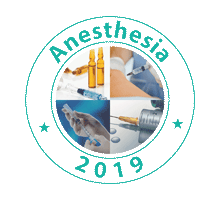Mohsen Jahandideh
Isfahan University of Medical Sciences, Iran
Title: Novel approaches to anesthesia in electroconvulsive therapy
Biography
Biography: Mohsen Jahandideh
Abstract
Electroconvulsive therapy (ECT) is a treatment used in various kinds of psychiatric disorders including depression, catatonia and manic disorders. There are a number of methods used to apply in ECT and there may be some complications including bradycardia, tachycardia and ECG changes. The contraindications for ECT include; intracranial hypertension, presence of a mass lesion in the brain, brain aneurysms, recent MI, angina, CHF and retinal detachment. The chronic use of psychiatric medications and co-existing medical situations warrant special care prior to ECT. Anesthesia is used to prevent unpleasant memories, while providing a prompt recovery. It is also used to preclude injury to bones due to abrupt muscle contractions during ECT. There have traditionally been various methods for providing pre-oxygenation and anesthesia during ECT. Different kinds of anesthetic drugs and neuro muscular blocking agents have also been used in this regard. But recently there many researches has been done regarding newer methods of providing preoxygenation and also different kinds of anesthetics used alone or in combination with each other that challenge the traditional methods of pre-oxygenation and anesthesia and can create better clinical results with less complications. In addition, different combinations of neuromuscular blocking agents have been studied in ECT which have yielded promising results in ECT and can reduce unwanted complications of traditional neuromuscular blocking agents. It is important for anesthesiologists to be familiar with these new methods in order to provide the best possible options for patients who require ECT in order to increase clinical results and decrease adverse complications of this procedure. We have reviewed a number of most recent studies in this regard. Although, many studies have been undertaken to improve anesthetic care furring ECT and lower the incidence of complications, there are still many questions that need to be addressed and more studies should be done to answer such questions and provide a higher standard of care for anesthesia during ECT

